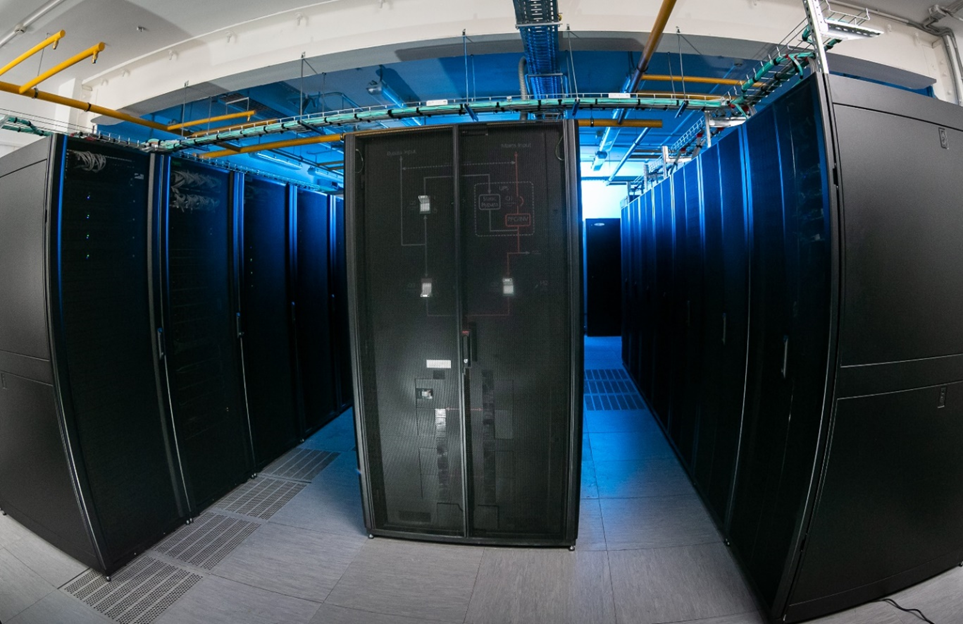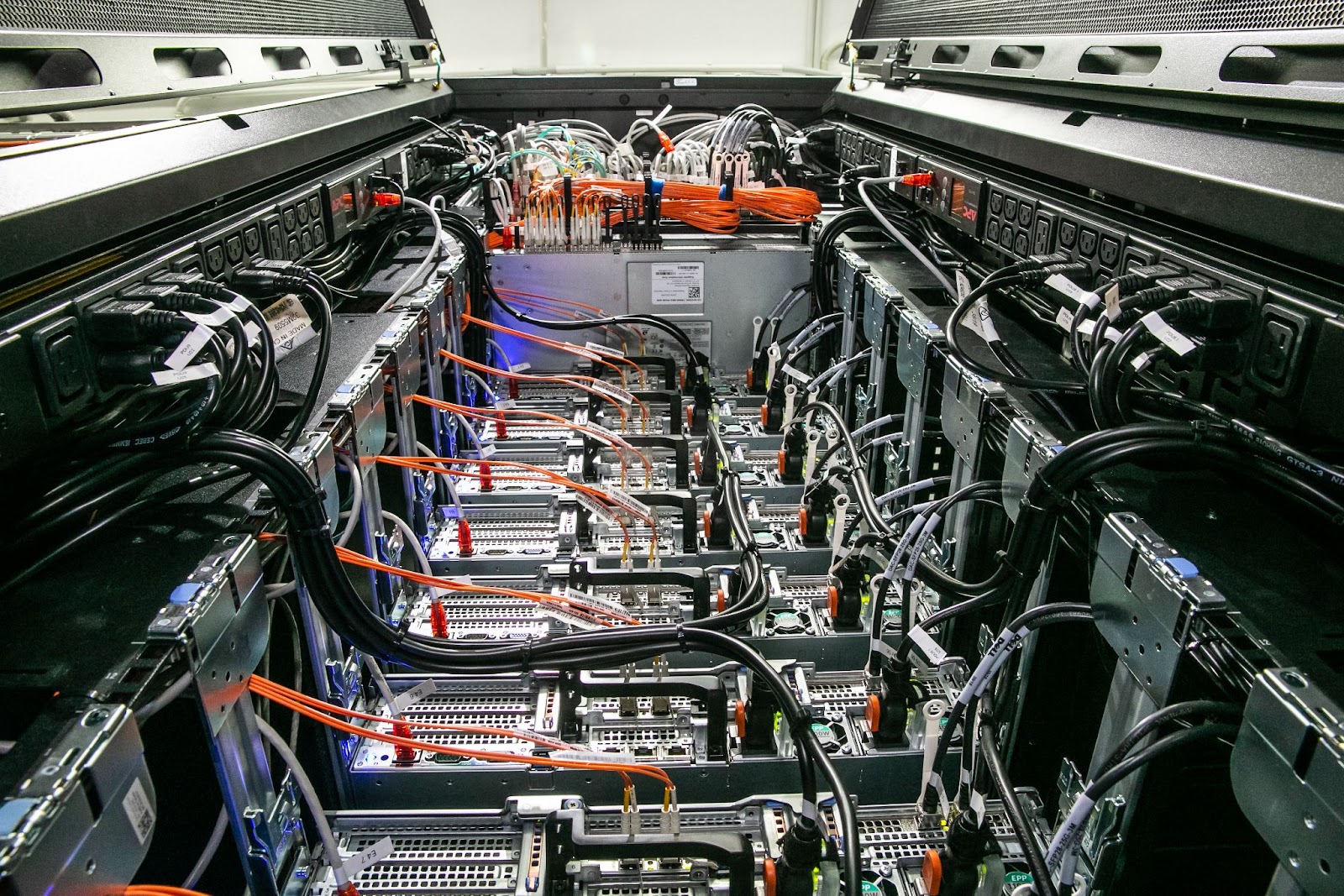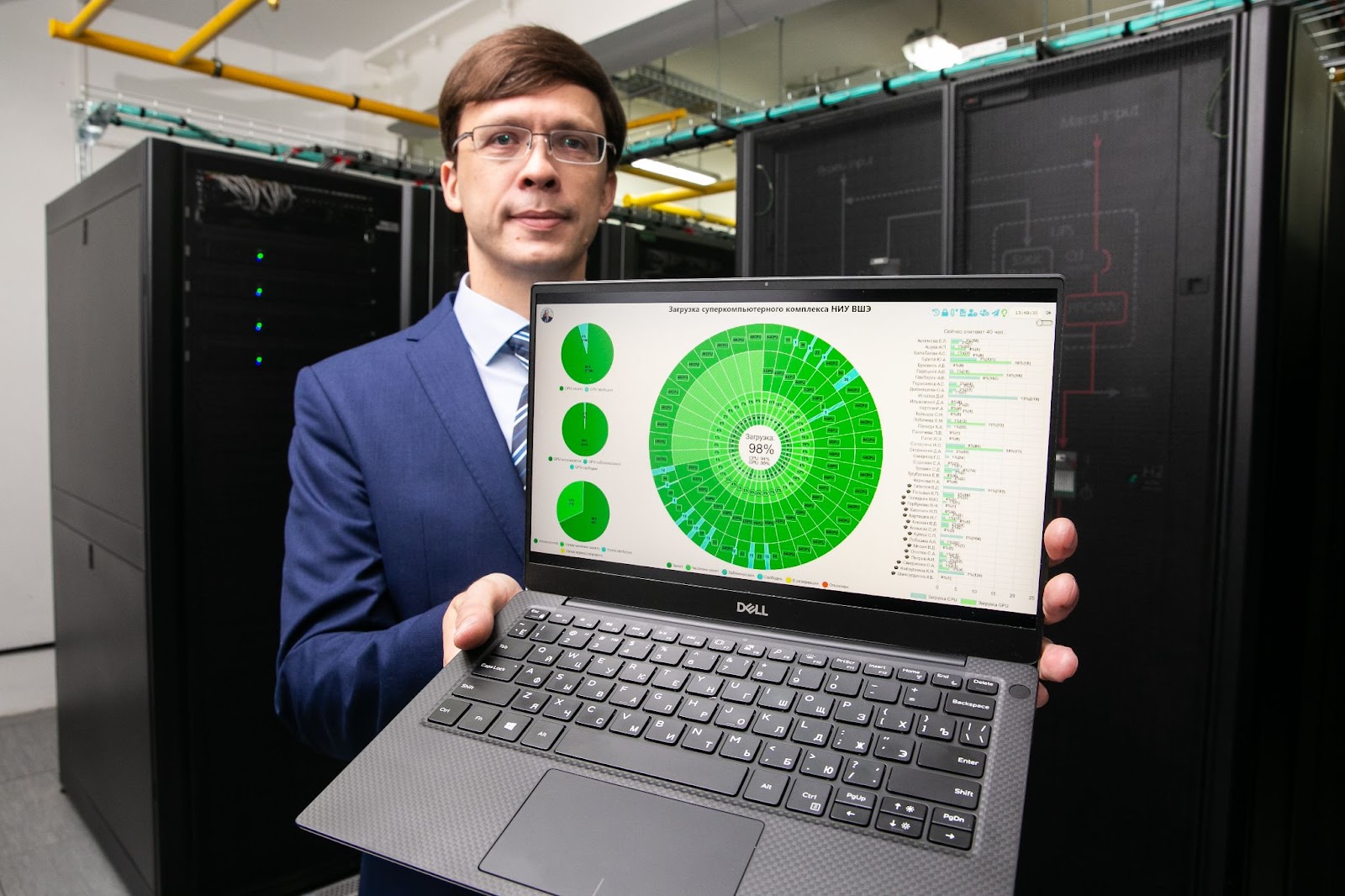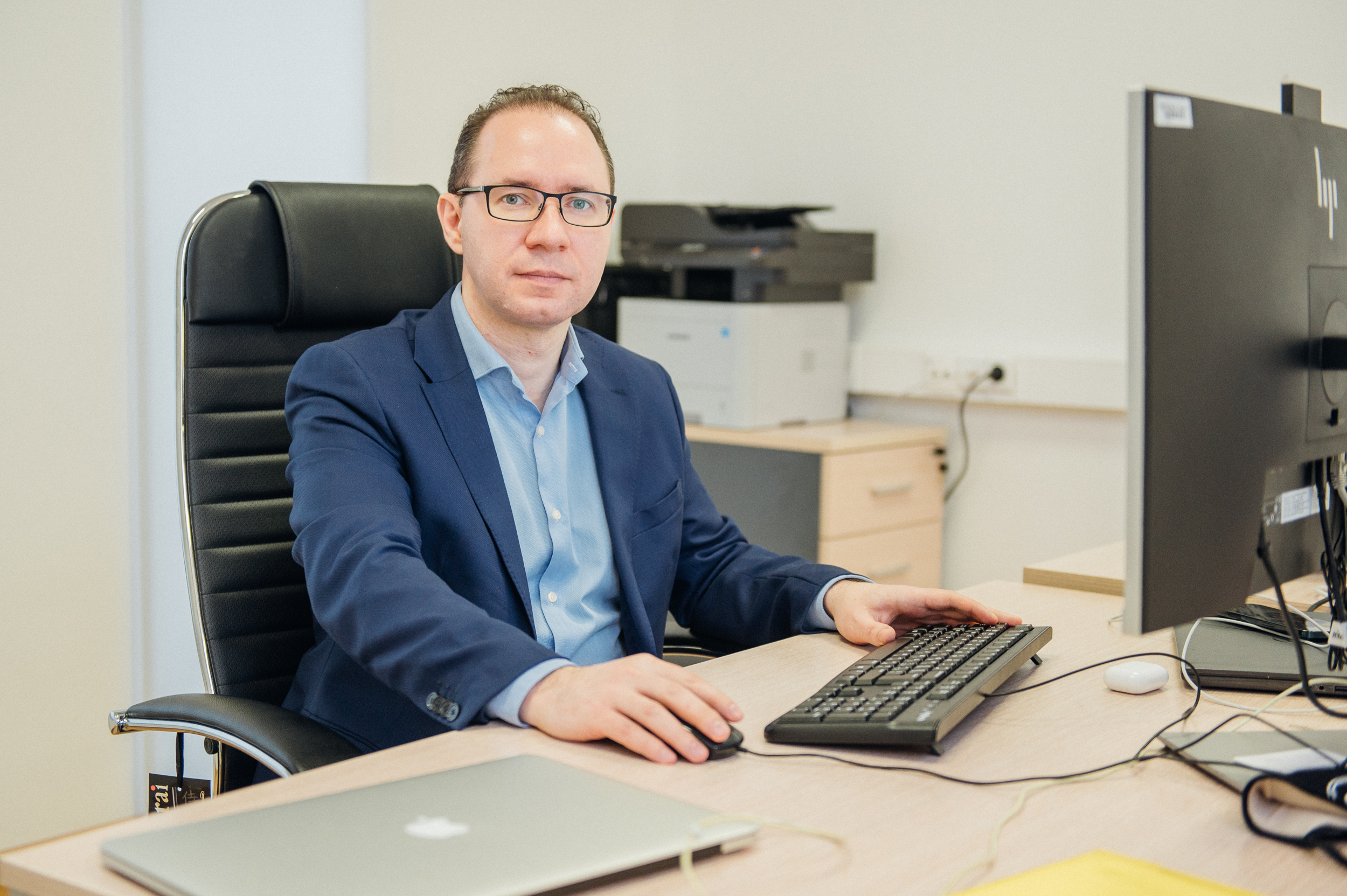From Covid-19 to Risk Appetite: How HSE University’s Supercomputer Helps Researchers

Whether researching how the human brain works, identifying the source of COVID-19, running complex calculations or testing scientific hypotheses, supercomputers can help us solve the most complex tasks. One of the most powerful supercomputers in the CIS is cHARISMa, which is now in its third year of operation at HSE University. Pavel Kostenetskiy, Head of the HSE University Supercomputer Modeling Unit, talks about how the supercomputer works and what kind of projects it works on.
A Research Tool
Modern researchers require increasingly powerful computing systems. Major research centres and universities meet this need by creating new computers and increasing the power of existing ones.
‘The kinds of problems that can be solved with a calculator or home computer were already solved long ago,’ explains Pavel Kostenetskiy. In today’s world, there is a race to produce highly rated publications, and the necessary results generally cannot be obtained without supercomputers.
A researcher studying a map of the night sky might want to find patterns in the motion of distant celestial bodies or calculate the location of undiscovered planets. This can be done empirically, as in the past, by observing the night sky, capturing images, and drawing and calculating the trajectories by hand. This could take decades, or even longer, and there is no guarantee that the scientist will manage to make their discovery.

Modern researchers are aided by supercomputers, which can process huge quantities of data from multi-year telescope surveys of the night sky in seconds and find pulse phenomena and anomalies in the motion of objects. True, each researcher needs to develop their own program in parallel to carry out these operations on the data efficiently. Many researchers write their own programs, while many others find ready-made, open-source research programmes and adapt them to their needs. Staff from the Supercomputer Modeling Unit help with the installation of such programs.
‘We receive requests from users to debug, configure, or update programs almost every day,’ says Pavel Kostenetskiy. He adds that the output researchers most often want to see is not a nice-looking diagram or graph, but a single number. The supercomputer is excellent at filtering and reducing the quantity of data. ‘A task from an immense quantity of data becomes much smaller … The less data in the output, the more understandable the result and the ensuing work will be,’ he concludes.
In theory, research work can also be carried out on personal computers, but they lack memory and computing power. Studies done on a personal computer can take years, compared to several days using a supercomputer. ‘In a few years, tasks that can be solved on a personal computer won’t be relevant anymore because someone will likely have solved them already,’ explains Pavel Kostenetskiy. The supercomputer performs two quadrillion floating-point operations per second—the equivalent of 200 thousand years of human effort.
Hitting the Bullseye
The cHARISMa (Computer of HSE for Artificial Intelligence and Supercomputer Modelling) high-performance computing cluster began its work at the university in 2019. It is one of the most modern supercomputers in Russia. It comprises 46 computing nodes combined into a single powerful system. It includes 146 NVIDIA A100 и V100 GPUs, 92 multi-core Intel and AMD processors (2584 cores), 47 terabytes of RAM and over a petabyte of disk storage.

By comparison, the most powerful personal desktop computer today is the Apple Mac Pro, whose most powerful configuration has four graphics processors, one central processor, 1.5 terabytes of RAM and 8 terabytes of disk storage. This system can handle video editing, mathematical tasks and 3D modelling, but it cannot be used to make new research discoveries.
‘While our supercomputer is not the most powerful in the country in pure numerical terms, it is optimally tuned to the requirements of HSE University’s resource-intensive research tasks in AI, mathematical modelling, research in physics and chemistry, neurocognitive technologies, economics and linguistics,’ explains Pavel Kostenetskiy. HSE University’s supercomputer is among the top ten most powerful in the CIS, and the only university computers that are more powerful are MSU’s Lomonosov-2 and SPbPU’s Politekhnik.
The HSE University supercomputer operates 24/7, solving tasks for 98 research projects simultaneously. Its program settings allow it to effectively distribute its workload: minor tasks are solved quickly in free nodes, while major tasks are governed by a system that automatically organises and reserves computing power.
The Pandemic and Risk
The cHARISMa supercomputer is used by 61 university departments, predominantly the Faculty of Computer Science, MIEM, and the St Peterburg School of Economics and Management.
The supercomputer helps to conduct research in various fields. For example, an HSE University and Skoltech research group worked with specialists from the Smorodintsev Research Institute of Influenza and the Kharkevich Institute for Information Transmission Problems to investigate COVID-19 strains. They discovered that during roughly the same time period in 2020, COVID-19 arrived in Russia 67 times—and only one of those was from China. Using cHARISMa, the researchers compared the mutations of almost 200 COVID-19 genomes from patients in 25 regions of Russia. After analysing the data, the researchers found that practically all COVID-19 strains present in Russia originated in European countries.

The Centre for Cognition & Decision Making of the HSE University Institute for Cognitive Neuroscience used the supercomputer to investigate the role of the prefrontal and parietal cortex in decision making. They demonstrated that at the behavioural level, magnetic stimulation increases an individual’s sensitivity to risk, and as a result, decreases their likelihood of choosing risky options. Preference modelling using a Bayesian approach showed that magnetic stimulation decreased the marginal utility of rewards, but did not influence probability distortion.
Many of the projects that utilise the cHARISMa supercomputer involve the creation of AI and its application in a wide variety of fields. For example, researchers from the Big Data and Information Retrieval School of the Faculty of Computer Science are creating models of AI neural networks that make it possible not only to generate an image from entered text, but to edit existing pictures using text.
Researchers from the MIEM School of Computer Engineering are developing an AI for generating and analysing the source code of computer programs. The AI can generate the source code of a program from a text description in natural language. What’s more, technology is being developed to automatically find and eliminate errors in human-written programs.
It goes without saying that supercomputers are a tool, not a panacea. Researchers still need to interpret the results, conduct further work, and prepare new data. Nevertheless, thanks to cHARISMa, HSE University’s researchers have already published over 110 research articles, including 25 papers in journals with the highest Scopus rating of Q1.
At the Cutting Edge
Just as scientists don’t rest on their laurels, but continue their studies and observations, supercomputers also require frequent upgrades. Without continuous additions, optimisation and updates, today’s supercomputer will be no more powerful than a new personal computer in ten years’ time. That’s why the HSE University supercomputer complex is regularly expanded. In 2020, 14 computing nodes and 12 NVIDIA Tesla V100 GPUs were added, and in 2021, cHARISMa received 48 of the latest NVIDIA A100 GPUs, which enable it to solve any tasks in the field of artificial intelligence.
‘We do a lot of work to maintain, develop, and optimise the supercomputer. As a result, HSE University’s computing complex is one of the most technologically advanced in Russia today,’ says Pavel Kostenetskiy.
The Supercomputer Modeling Unit has developed HPC TaskMaster, an efficiency-monitoring program system that has improved the supercomputer’s performance by 7% without requiring the purchase of new equipment.

Dmitry Bondar, Senior Director for Digital Transformation at HSE University
Every modern university needs a supercomputer. Without one, it is impossible to carry out digital transformation of the university and work on world-class research. That is why we make every effort to develop cHARISMa. The Digital Office not only employs the best specialists in the country, but we also actively develop the team’s competencies in the Agile methodology and project management. This makes the Digital Office’s work more effective and ensures a high level of availability and productivity of all the university’s systems and services.
Text by Laboratory for Economic Journalism Research Assistants Kamila Rafibekova and Semyon Vasilyev
Dmitry Bondar
Senior Director for Digital Transformation
Pavel Kostenetskiy
Head, Supercomputer Modeling Unit
See also:
Scientists Model Turbulence at Atomic Level
Scientists at HSE University and MIPT have developed a supercomputer-based method to model fluid flows at atomistic scales making it possible to describe the emergence of turbulence. The researchers used the supercomputers cHARISMa and Desmos to compute the flow of a fluid consisting of several hundred million atoms. This method is already being used to simulate the flow of liquid-metal lead coolant in a nuclear reactor. The paper has been published in The International Journal of High Performance Computing Applications.
‘In the Future, I Expect Rapid Development of Professions Related to Prompt Engineering’
The English-language programme of HSE Online ‘Master of Computer Vision’ will change its name to ‘Artificial Intelligence and Computer Vision’ in 2024. Andrey Savchenko, the programme academic supervisor, shares how the new name will affect the programme semantics, why AI has become the main federal trend in the field of information technology, and what tasks graduates will solve.
Artificial Intelligence as a Driver of Digital Transformation
In December, the HSE Institute for Statistical Studies and Economics of Knowledge and the HSE AI Research Centre participated in UNCTAD eWeek to discuss the future of the emerging digital economy. One of the topics discussed during the conference was artificial intelligence and its applications in driving the digital transformation of industry sectors. The session was co-organised by HSE University.
HSE University Receives Highest Grant under Priority 2030 Programme
HSE University has proved its leading position in the first group of the ‘Research Leadership’ field under the Priority 2030 programme. The university has also received the highest grant for teaching digital competencies to students, demonstrating its educational leadership in the fields of digital technologies and AI.
‘The Future Lies with AI Technologies and HSE University Understands That’
At the AI Journey 2023 international conference in Moscow, a ranking of Russian universities that train the best AI specialists was published. HSE University entered the A+ leadership group, taking first place according to such criteria as ‘Demand for hiring graduates’, ‘Quality of educational environment’, and ‘Activities for the development of school education’. Ivan Arzhantsev, Dean of HSE University’s Faculty of Computer Science, spoke to the HSE News Service about how AI specialists are trained at HSE University and what plans the university has in this area.
‘Every Article on NeurIPS Is Considered a Significant Result’
Staff members of the HSE Faculty of Computer Science will present 12 of their works at the 37th Conference and Workshop on Neural Information Processing Systems (NeurIPS), one of the most significant events in the field of artificial intelligence and machine learning. This year it will be held on December 10–16 in New Orleans (USA).
Specialists from the HSE Institute of Education Confirm GigaChat’s Erudition in Social Sciences
A multimodal neural network model by Sber, under the supervision of HSE University’s expert commission, has successfully passed the Unified State Exam in social studies. GigaChat completed all exam tasks and scored 67 points.
HSE University Students Win in the AIJ Science Competition at AI Journey 2023
The International Sber Conference of Artificial Intelligence, ‘AI Journey 2023’ recently took place in Moscow. Alexander Rogachev, doctoral student of the HSE Faculty of Computer Science, and Egor Egorov, an HSE 4th-year undergraduate student became the winners of the AIJ Science competition for scientific articles on artificial intelligence that was held as part of the event. The research was carried out under the umbrella of the HSE's Laboratory of Methods for Big Data Analysis (LAMBDA).
HSE University Hosts Fall into ML 2023 Conference on Machine Learning
Over three days, more than 300 conference participants attended workshops, seminars, sections and a poster session. During panel discussions, experts deliberated on the regulation of artificial intelligence (AI) technologies and considered collaborative initiatives between academic institutions and industry to advance AI development through megaprojects.
Child Ex Machina: What Artificial Intelligence Can Learn from Toddlers
Top development teams around the world are trying to create a neural network similar to a curious but bored three-year-old kid. IQ.HSE shares why this approach is necessary and how such methods can bring us closer to creating strong artificial intelligence.


